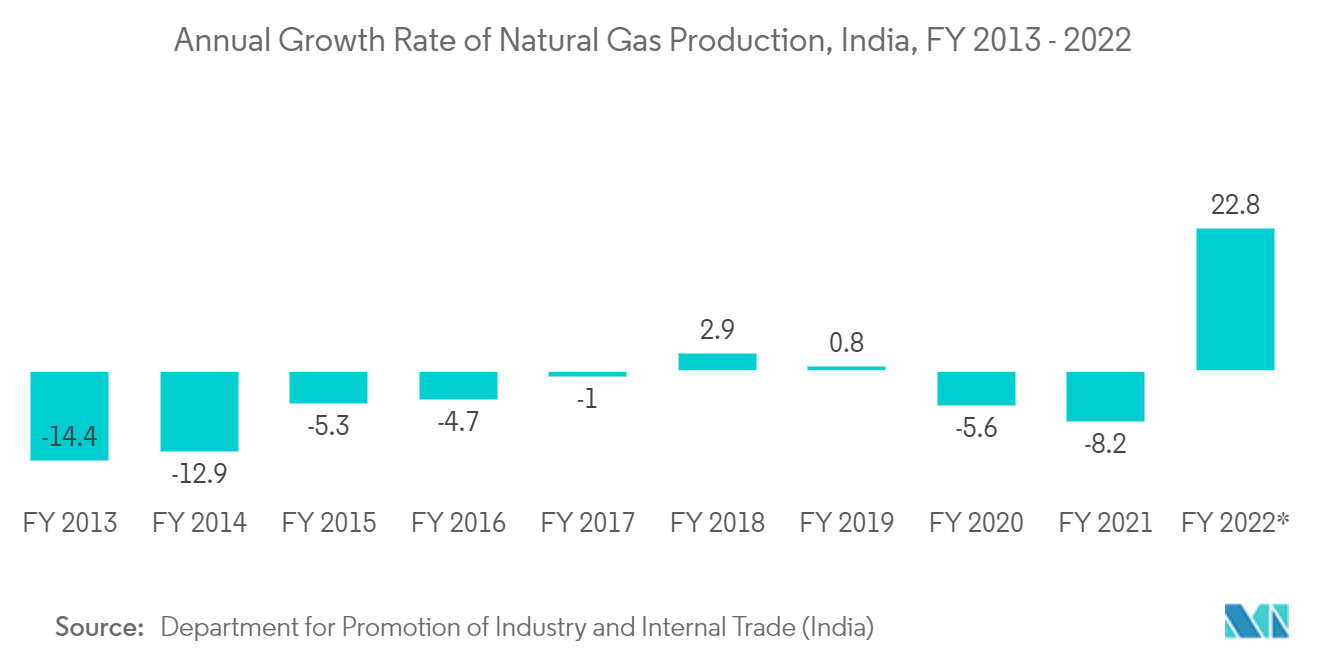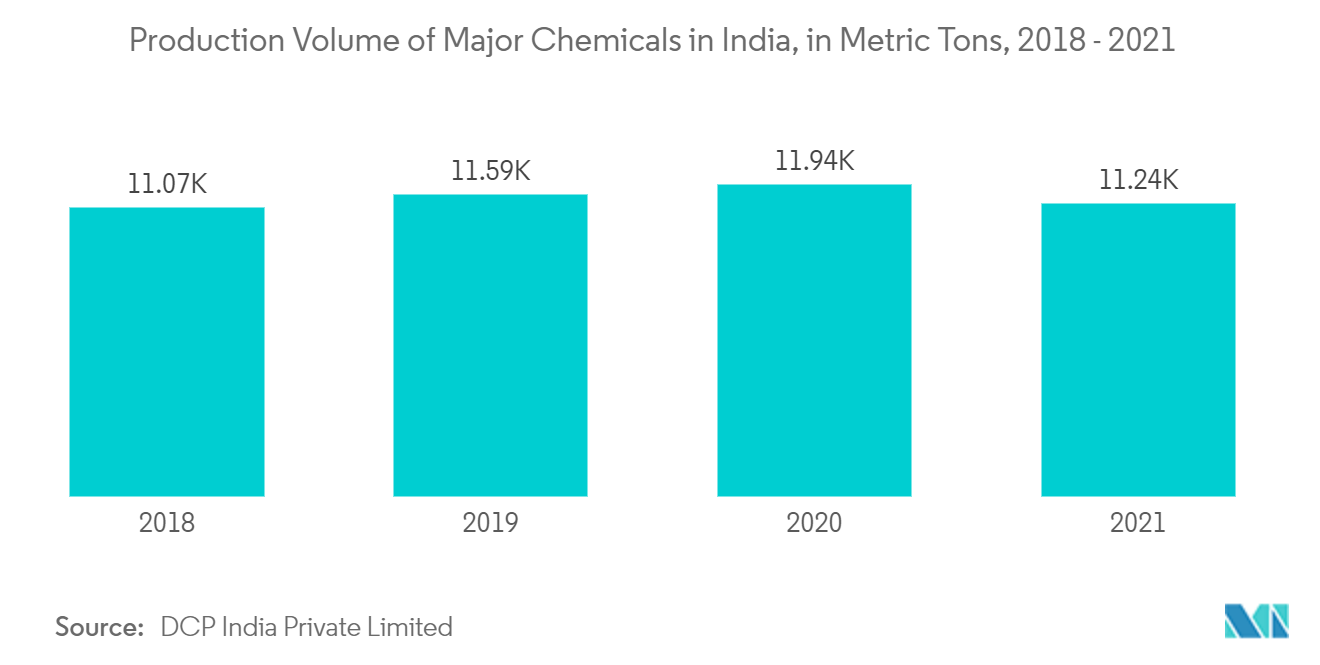Market Trends of India Industrial Sensors and Transmitters Industry
This section covers the major market trends shaping the India Industrial Sensors & Transmitters Market according to our research experts:
Flow Sensors are Expected to be Higher in Demand
- The deployment of Internet of Things technology in the industrial field has resulted in the Industrial IoT becoming the development direction and trend. Gas flow sensors are widely utilized in industrial automation, natural gas, metallurgy, mining, petroleum, aviation, industrial packaging, and industrial cleaning, among other fields. In addition, the requirement for flow measurement in oil and gas in response to rigorous rules related to controlling harmful gas emissions from power plants is driving the region's adoption of flow sensors.
- Flow Sensors are components that can measure the flow of a fluid, such as a gas or liquid. These sensors utilize both mechanical and electrical subsystems to measure changes in the fluid's physical attributes and calculate its flow. In India, the adoption of flow sensors is widely seen in various end-user industries, including pharmaceutical, automotive, oil and gas, chemical, water and wastewater, manufacturing, power generation, chemical, and others.
- These sensors are distinguished by the type of technologies that are used to measure flow. The technologies include Coriolis, Differential Flow, Ultrasonic, Vortex, and others. There has been significant development in technologies, such as ultrasonic, to operate in harsh environments with precision.
- The selection of an appropriate flow sensor for monitoring fuel gas to flare and acid gas, as well as monitoring liquefied natural gas (LNG) during processing, transportation, and storage, is crucial. Furthermore, because of the increased need for efficiency and accuracy in equipment operation, the adoption of automation across the oil and gas value chain had a major impact on the adoption of flow sensors.
- In the oil & gas sector, flow measurement is crucial. It is required in upstream operations that include well testing, enhanced oil recovery, fractionation, completion, and separation, as well as the recovery and preparation of crude oil and natural gas.

Chemicals and Fertilizers Sector is Expected to Witness Higher Growth
- The pressure sensor is one of the most widely used measurement devices in the chemical industry's automatic control. In large-scale chemical projects, almost all pressure sensor applications, including differential pressure, absolute pressure, gauge pressure, high pressure, differential pressure, high temperature, low temperature, and remote transmission flange pressure sensors of various materials and special processing, are used. The chemical industry's demand for pressure sensors can be summarised as follows: measurement precision, fast response, temperature, and static pressure characteristics, and long-term stability.
- Liquid level sensors are employed in the Petrochemicals and Chemical factories to detect highly corrosive and acidic chemicals, ensuring that all operations run smoothly. In the petrochemical industry, ultrasonic liquid level sensors are employed because they are non-contact devices that provide safety while detecting chemical quality.
- Temperatures in cracking and Sulphur recovery furnaces can range from cryogenic (far below zero) to over 800°C. Temperatures this high necessitate a diverse set of materials and sensor technologies. In applications below 600°C, RTD sensors provide a more precise reading and can be used repeatedly.
- Sensor assemblies that are explosion-proof or intrinsically safe are necessary for the chemical industries, such as paints and flammable chemicals, because they deal with hydrocarbons and alcohols. Reliable and repeatable level, flow, pressure, and temperature measurements are essential for safe, precise, and continuous process control. Thermocouples, RTD sensors with thermo wells, infrared temperature sensors, and infrared thermal imaging are often used to monitor these processes.
- The pressure transmitter is one of the chemical industry's most commonly used automatic control devices. It covers almost all pressure transmitter applications in large chemical projects, such as differential pressure, absolute pressure, gauge pressure, pressure, differential pressure, high temperature, low temperature, and a variety of materials and special processing of remote flange Pressure Transmitters.


